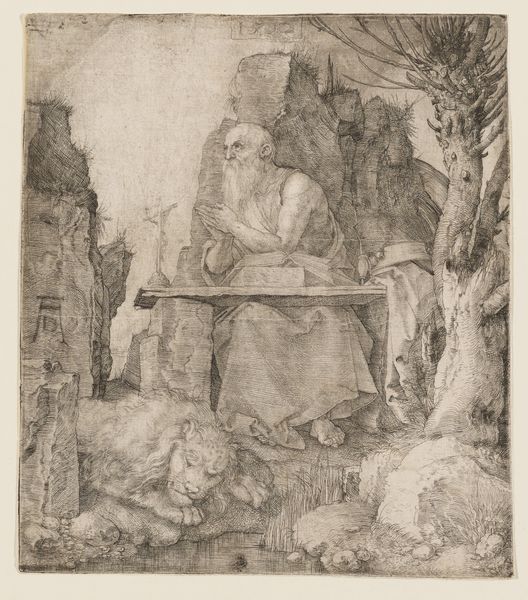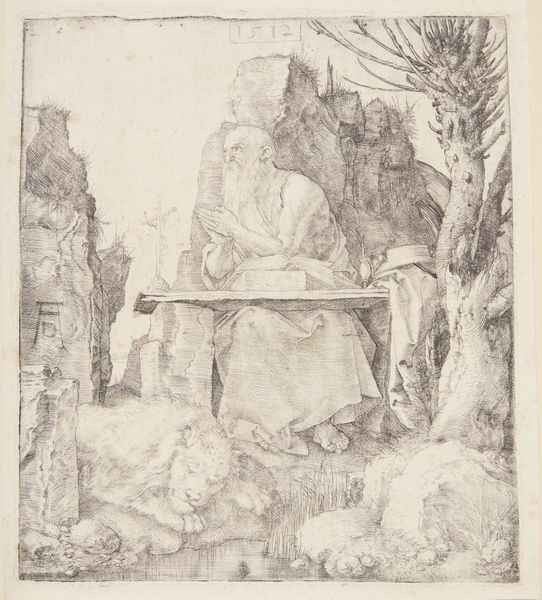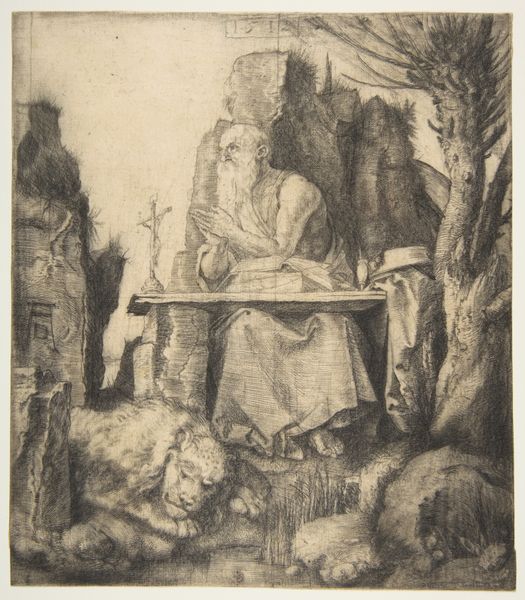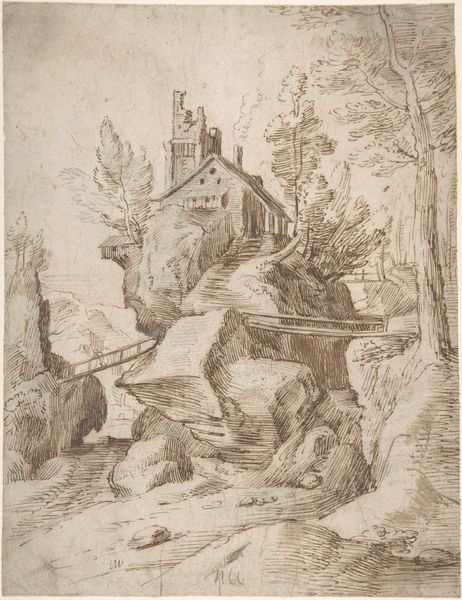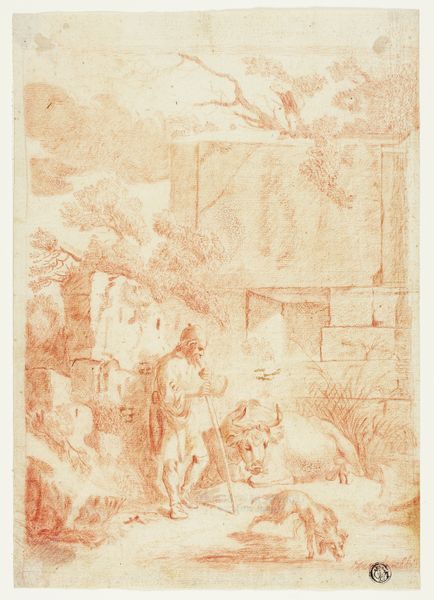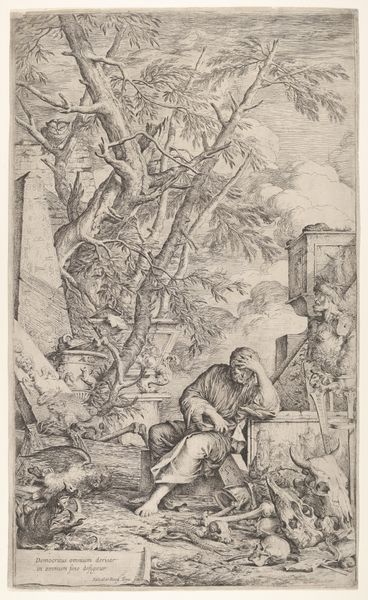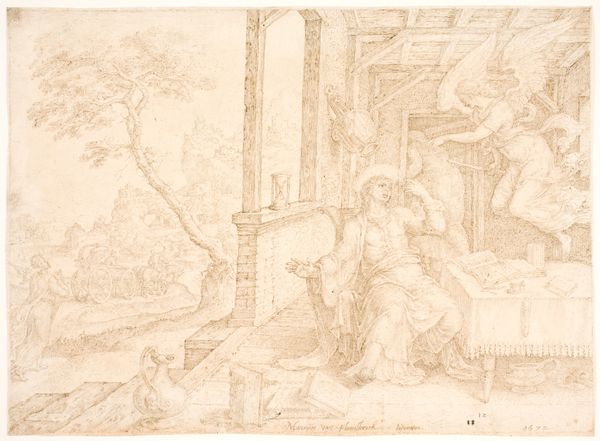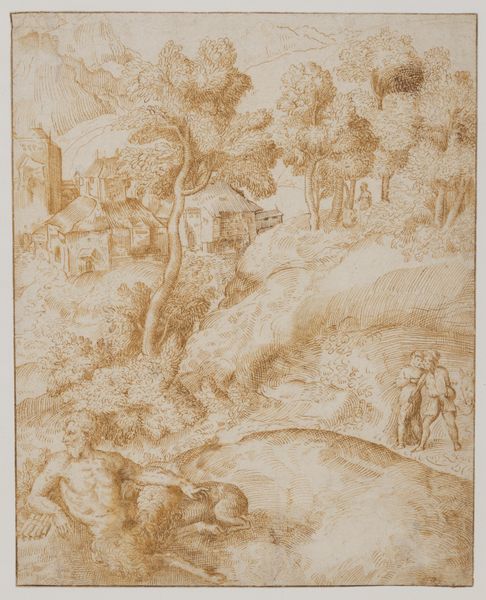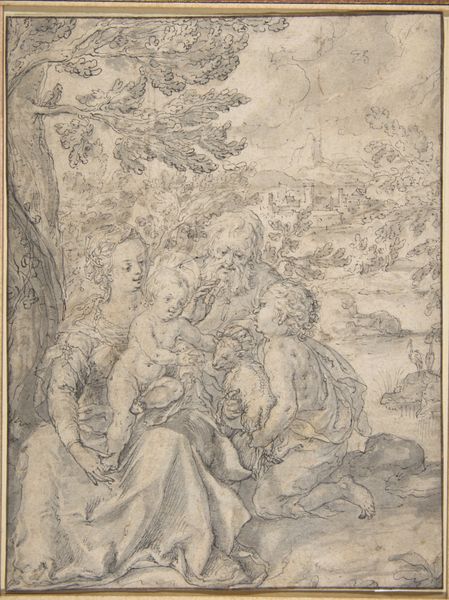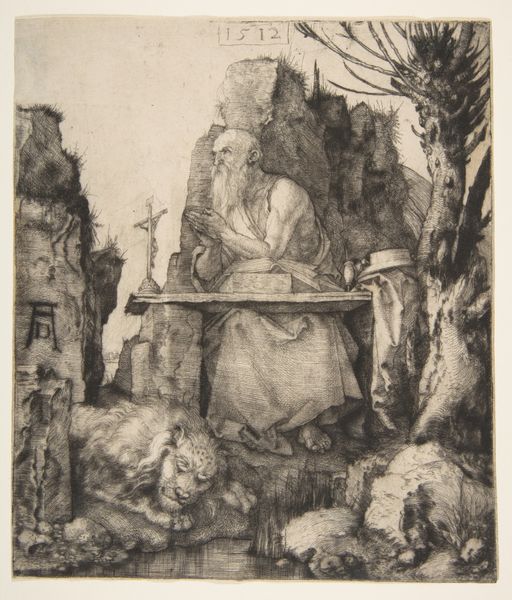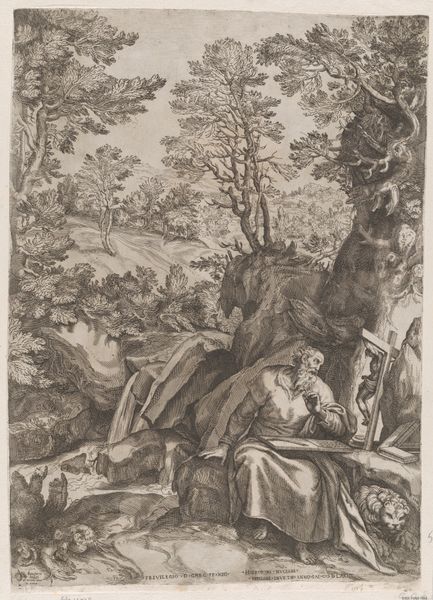
drawing, print, engraving
#
tree
#
drawing
# print
#
landscape
#
history-painting
#
northern-renaissance
#
engraving
Dimensions: Sheet: 8 1/16 × 7 1/16 in. (20.4 × 17.9 cm)
Copyright: Public Domain
Albrecht Dürer created this etching of Saint Jerome by the Pollard Willow sometime in the early 16th century, a period of immense religious and social upheaval in Europe. Saint Jerome was a key figure in the history of the church, best known for translating the Bible into Latin. Dürer has placed him in a detailed landscape, seated at his desk, with a lion resting peacefully at his feet. The setting evokes a sense of tranquility and scholarly devotion. But the choice of Saint Jerome as a subject also speaks to the religious debates of the time. As the Reformation challenged the authority of the Catholic Church, figures like Jerome, with their emphasis on scripture and individual piety, became important symbols for reformers. Dürer himself was deeply engaged with these debates, and his art often reflects a desire for religious renewal. To understand the full significance of this work, we need to consider the broader social and intellectual context in which it was made, turning to historical sources to enrich our understanding of art.
Comments
No comments
Be the first to comment and join the conversation on the ultimate creative platform.
